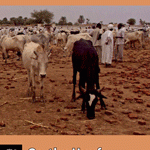Livestock is one of Darfur’s main economic assets and makes a major contribution to Sudan’s national livestock and meat exports. This report explores what has happened to the livestock trade in the greater Darfur region during nine years of conflict, since 2003. It documents how Darfur’s livestock trade has been negatively affected by the conflict, contracting in volume and losing competitiveness as trading costs have soared and as the quality of animals brought to the market has deteriorated. Physical market infrastructure has also deteriorated and the region has only one, poorly functioning slaughter-house, although such facilities could play a critical role in stimulating Darfur’s livestock trade and in efficiency gains if livestock no longer had to be trekked on the hoof to Omdurman, especially during the dry season. A positive development, however, has been the flourishing trade in hides and skins in Darfur during the conflict years.
The report makes a number of recommendations, first, for immediate action to support the livestock trade in the current environment in Darfur, and second, at a policy and strategic level to support the eventual recovery of Darfur’s economy and to contribute to the national economy.
This report is based on fieldwork carried out across the Darfur region during 2011.
The report is accompanied by a policy brief in English (here) and Arabic (here).







